Oftentimes a watch manufacturer wants to make something special, and while this usually means a watch with a new timekeeping function, improvements on traditional methods, mechanicals or materials, or an exotic complication cocktail, it is not always the case. Even the simplest time-only watch can be special when a top manufacture decides to make it so, and such is the situation with an Observatory chronometer.Switzerland conducted timekeeping trials at its observatories from 1866 (Geneva since 1873) until their demise in 1973. Unlike Bureaux Officiels certification, which began at about the same time and which today (now as C.O.S.C.) certifies millions of movements annually, Observatory trials usually involved only a few dozen movements, and were dominated by Patek Philippe, Vacheron & Constantin and Omega (and later, Rolex). They required some 6 weeks of testing, and produced a significant failure rate; obviously this was a very expensive process, and a movement receiving any level of Observatory certification is a great rarity. Only movements of proven design and equipped with the finest technology and materials of the day were worth the intense efforts required to test and prepare them for submission to the Trials, and finish and regulation would be the responsibility of the manufactures' top watchmakers.
(some additional comments may be found at my posting on the Be-Ba wristwatch Chronometer)
Besides functioning as a showcase for the manufacture's design, skill and tenacity, an Observatory watch conveys that unique charm of knowing its rarity, of having been assembled, finished and regulated by a master watchmaker, and of being proven in rigorous testing by independent experts. The present watch has a movement which was submitted for trial at the Observaory in Geneva, receiving its certificate in 1914. An official copy is posted below, but from my rudimentary French I have read the following results:
-- This class receiving certification consisted of 93 pieces with scores ranging from 606 to 879 (out of a possible 1000), and this movement achieved 626 points, considered as Honorable Mention
-- Measurements were taken for 46 consecutive days, beginning near the end of 1913
-- Positional error ranged from -0.20 seconds to +1.42 seconds per day, with average deviation from the mean of 0.41 seconds
-- Temperature compensation error averaged 0.037 seconds per degree centigrade
-- The average daily rate was +0.29 seconds, and the maximum deviation in daily rate between any two testing periods was 1.62 seconds
Much more has so far escaped my understanding, but this certainly suggests very, very good timekeeping, especially given the technological and manufacturing realities of the era.
The watch itself is 49mm across, in a simple gold case. The dial is crisp white enamel with a sunken subdial, marked in black and red, and features Breguet numerals and extravagantly ornate Louis XV hands. I strongly suspect that the dial is hand-painted, and likely the hands are hand-wrought from high-karat gold; in any case the execution is near-flawless.
Patek's manufacturing marks are on the inside of the back, while the dustcover is inscribed with a dedication dated 1921. Although it was certified some 7 years earlier, perhaps it was not unusual that such an expensive and specialized movement might long await the commissioning of a specific case and dial before being offered at retail sale.
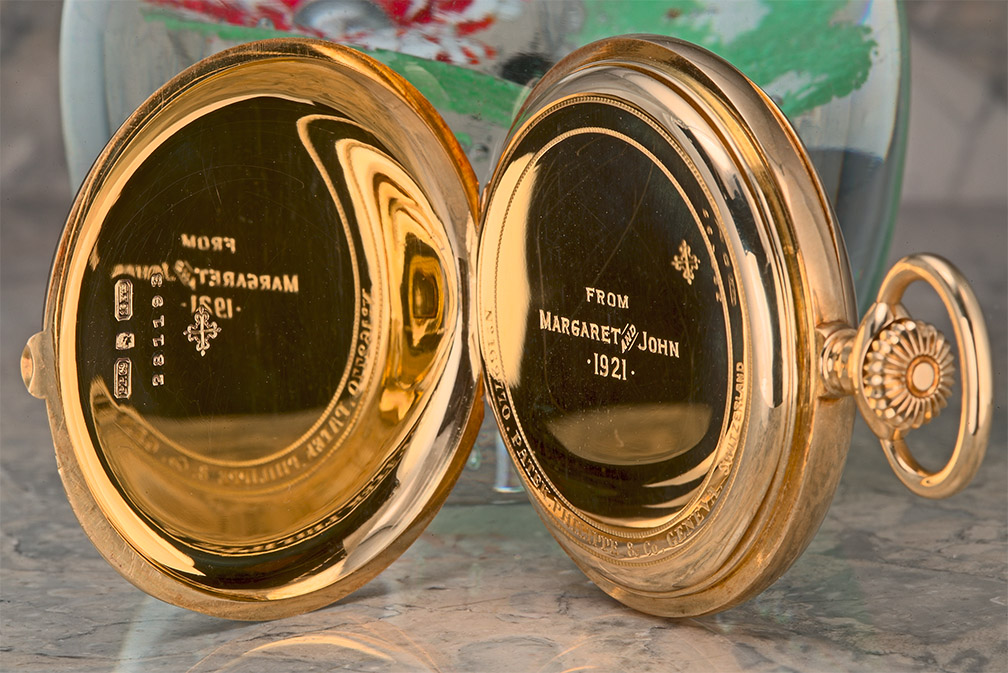
As beautiful as the watch itself is, the highlight is obviously the movement. It is 19 lignes (about 43mm diameter), and while I have not yet encountered a caliber number or other specific designation, it appears to be the common platform for simple Patek Philippe Observatory watches during roughly the first quarter of the 20th century. The overall design is a beautiful full-bridge treatment, offering separate cocks for the balance, escape and fourth wheel, a bridge for the center and third wheels, and individual plates for the crown wheel and barrel. Its elegance is not happenstance, but rather the fruitful convergence of a refined artistic sense and design for serviceability. Note that the engraving indicates the full eight adjustments, as well as "Extra", a designation reserved for Patek Philippe's top movements.
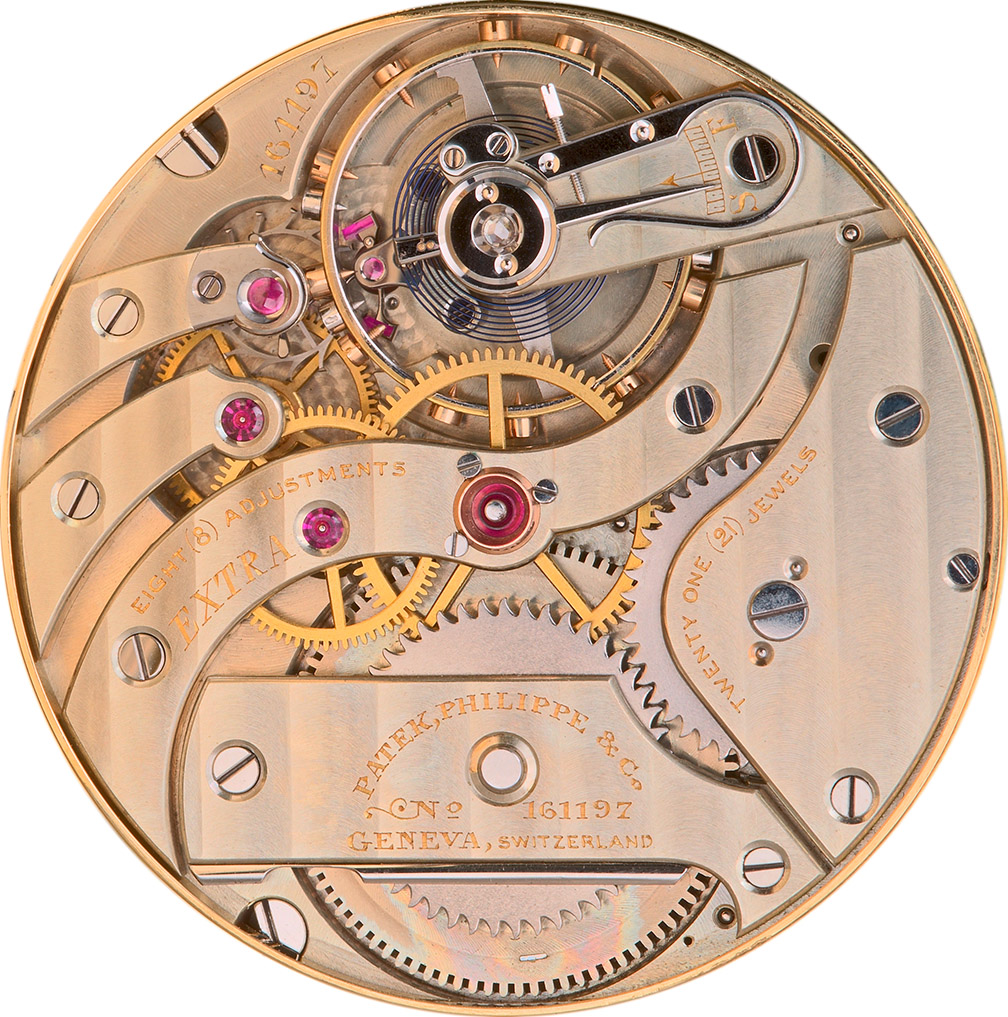
All the gorgeous horological exotica of a century ago is present: split, bimetallic Guillaume balance with diamond endstone, deeply-blued overcoil hairspring, elegant swan's-neck regulator.
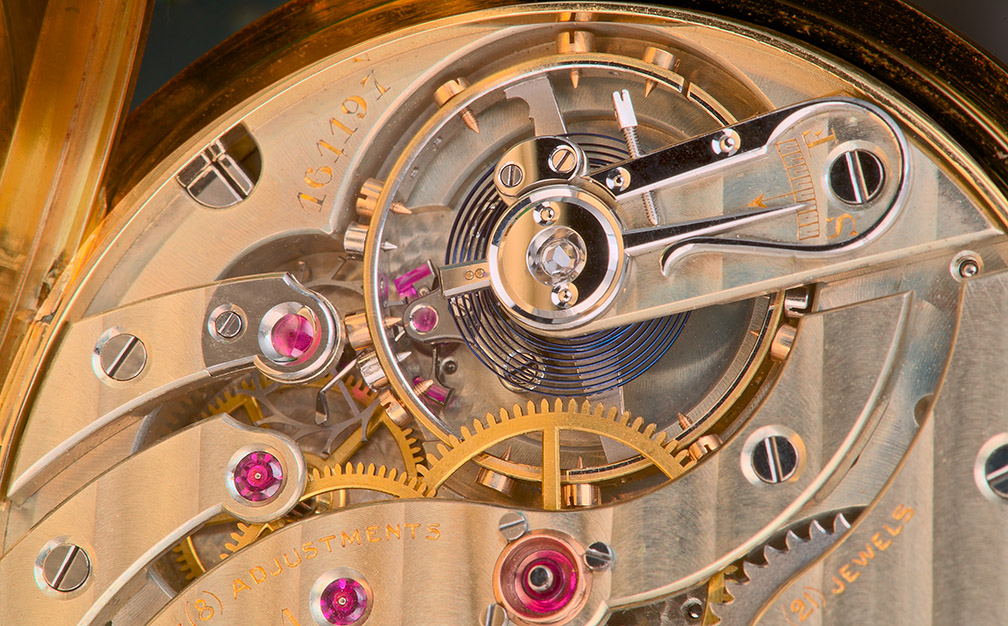
Everything about this regulator shines! All the main pieces are polished black, and the screws have beveled and polished heads and slots, and countersinks.
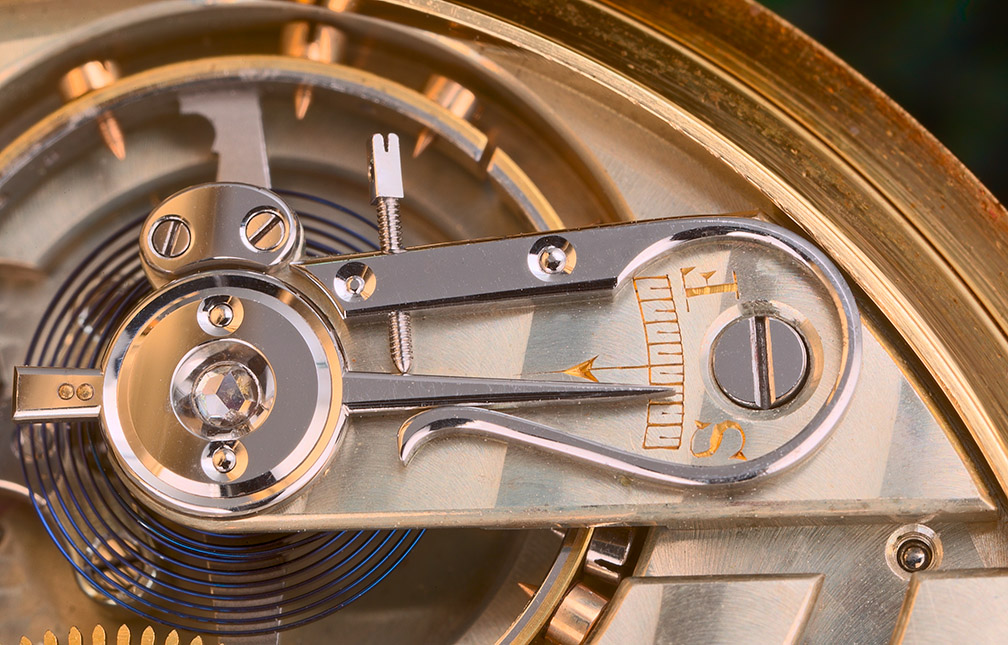
Platinum timing screws, black-polished endcap for the anchor jewel, incredible sculptured and polished anchor!
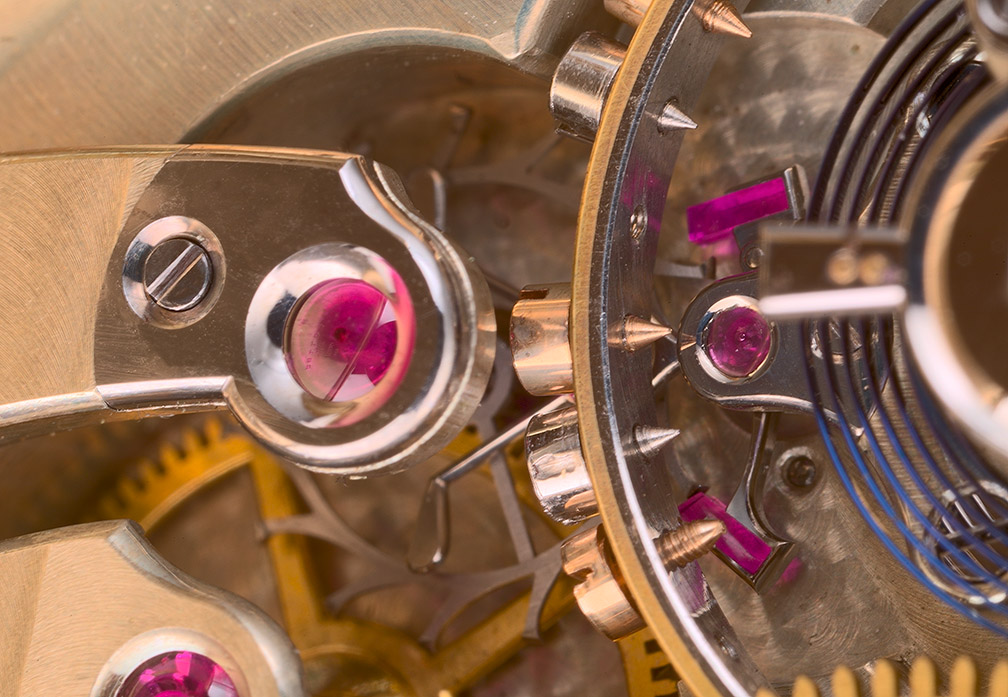
This picture shows the beautiful, clean escape wheel, and the far end of the very unusual counterpoise which helps maintain alignment of the pallet jewels.
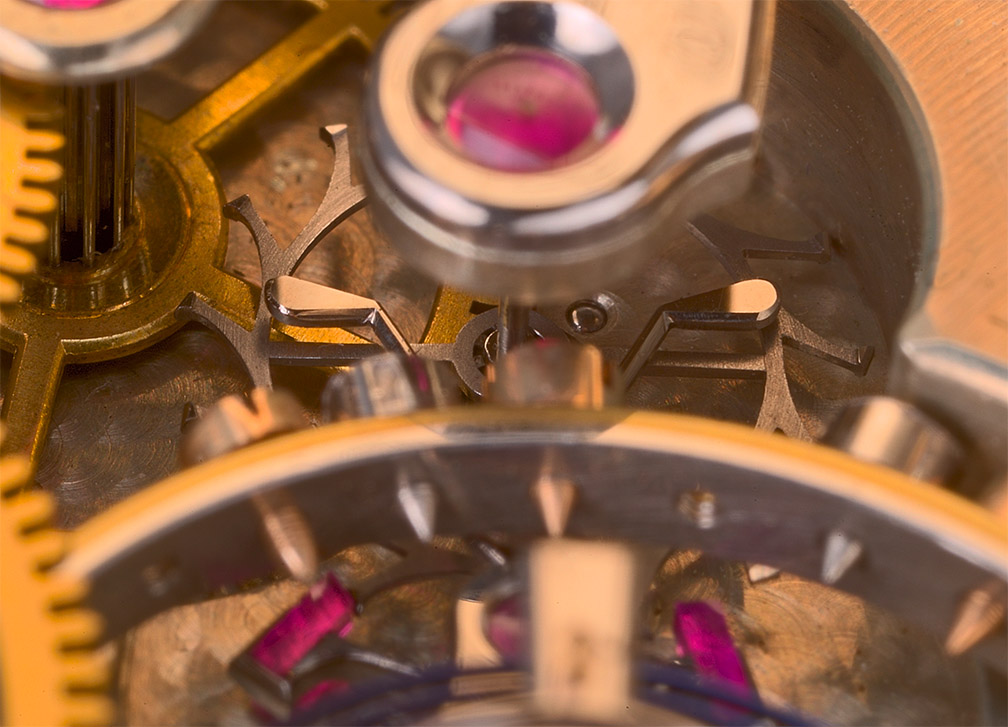
Another view of the counterpoise, showing the screwed attachment to the entry pallet; more beautiful polished steel.
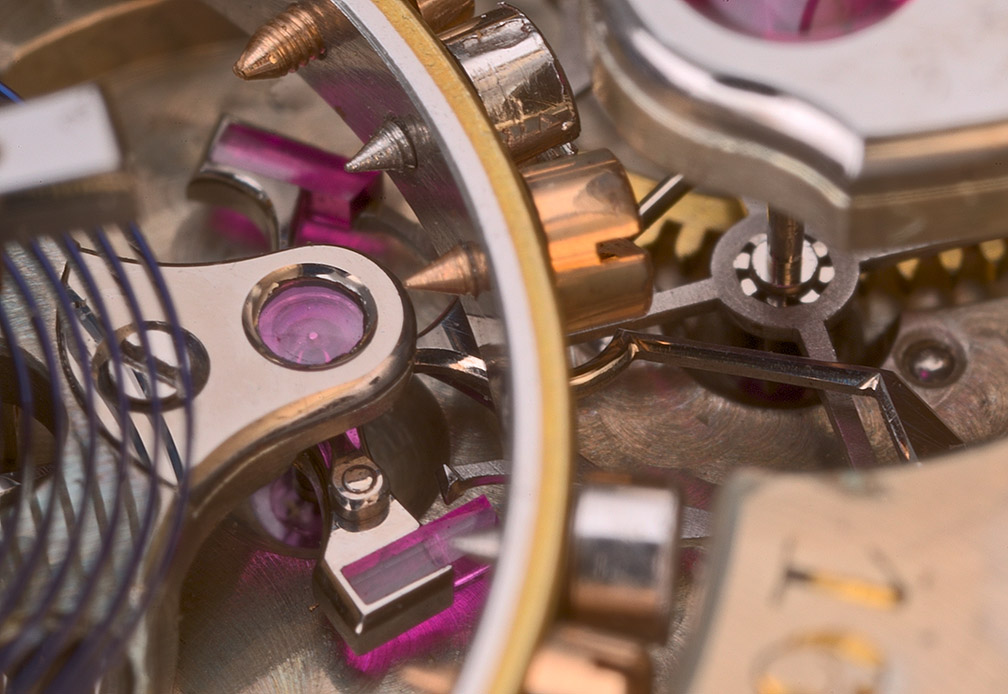
Tips of the escape and fourth wheel cocks. The escape jewel has a polished steel cap sporting mirror-finish countersinks and amazing radiused anglage!
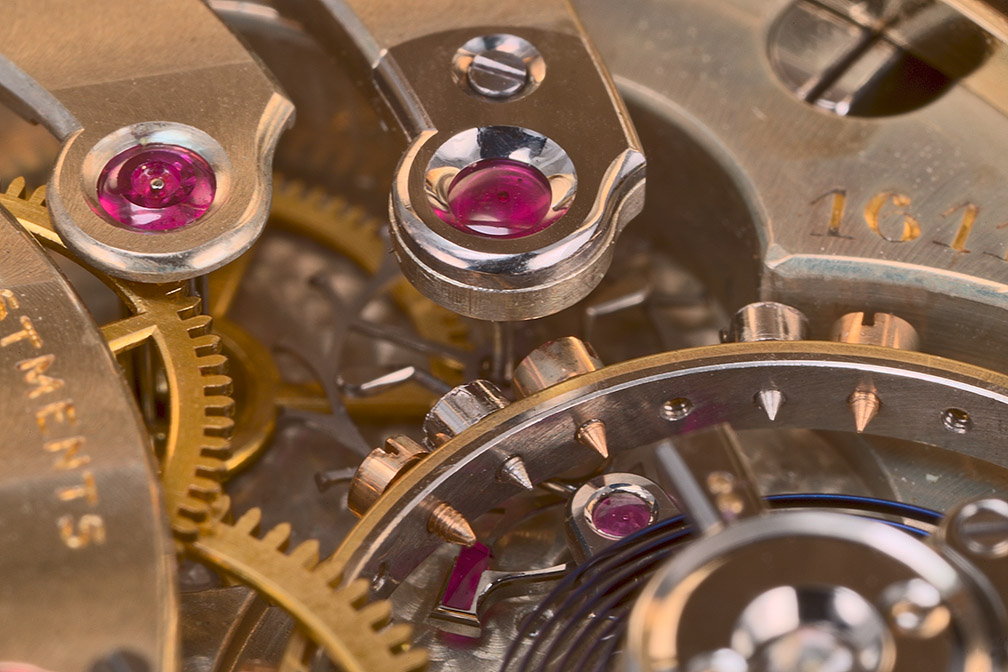
Screwed, chaton-set center jewel, soft Geneva stripes, more fabulous anglage, ultra-clean wolf's-tooth winding wheels, delicate brass spokes.
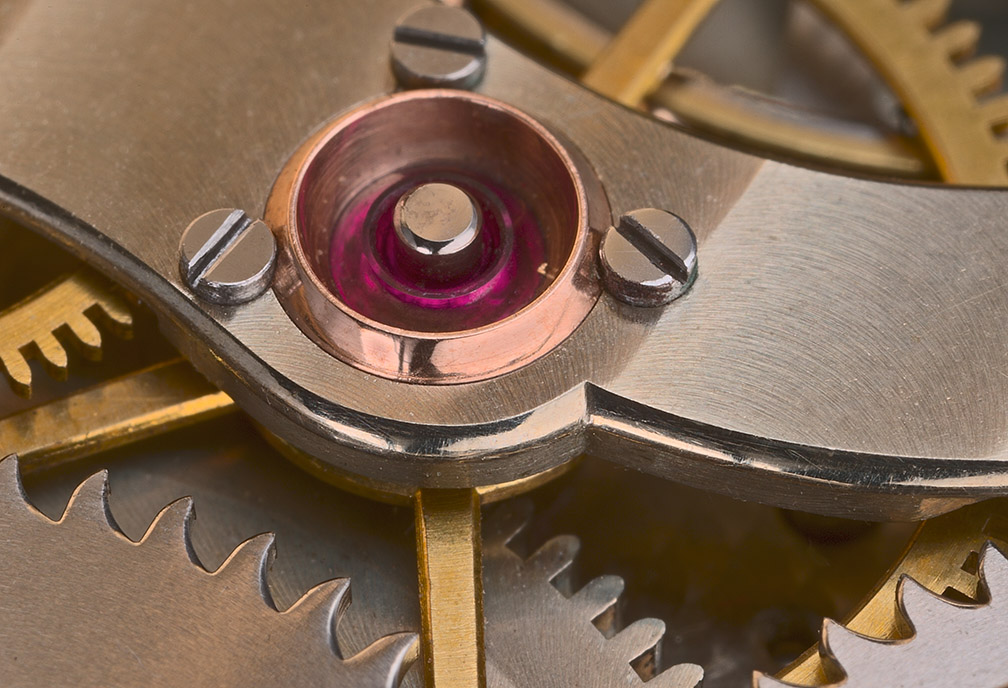 <
<
Another gorgeous bit of sculpture, barrel bridge and the steel click-spring engaging a winding wheel.
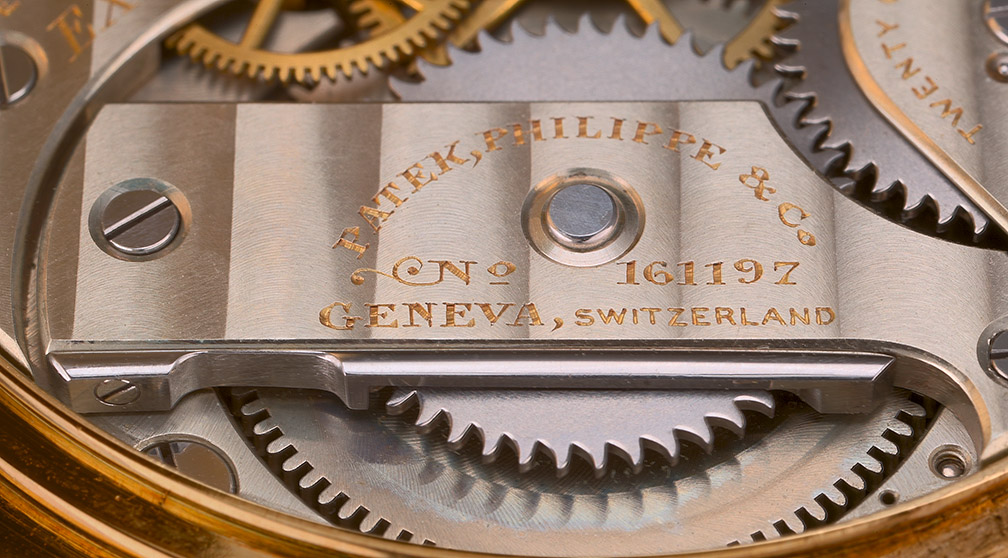
Close-up of the end of the click. Note the spring's perfect fit, and the precisely beveled teeth of the winding wheel.
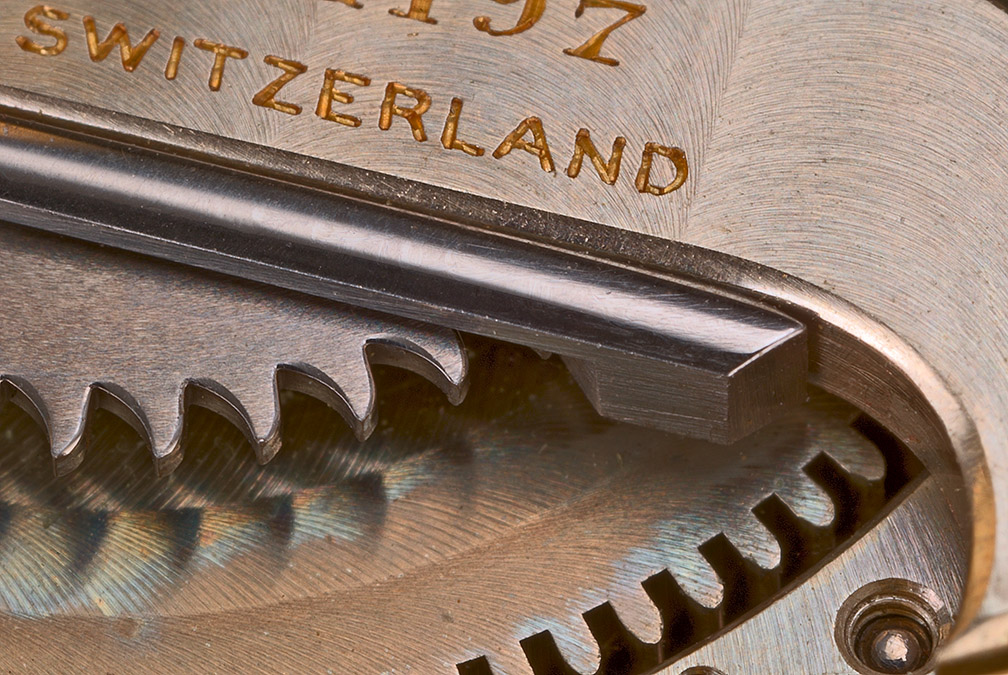
Finally, here is a copy of the observatory certificate: award at the left, summary at center, and measurements for the 46 individual timing days at the right.
Please check out the rest of my watch Articles and pics:
I hope you enjoyed this!
SteveG
July 13, 2006
All content Copyright asserted 2003, 2004, 2005, 2006